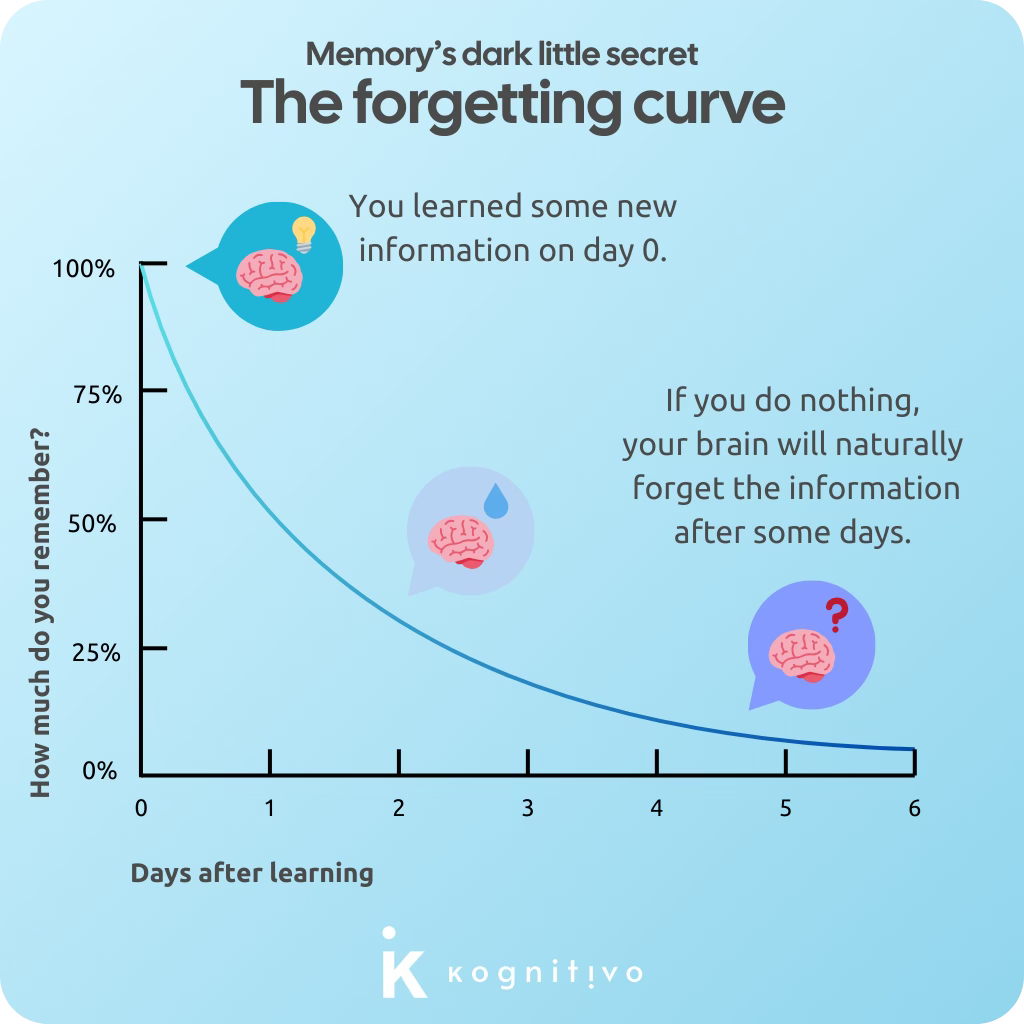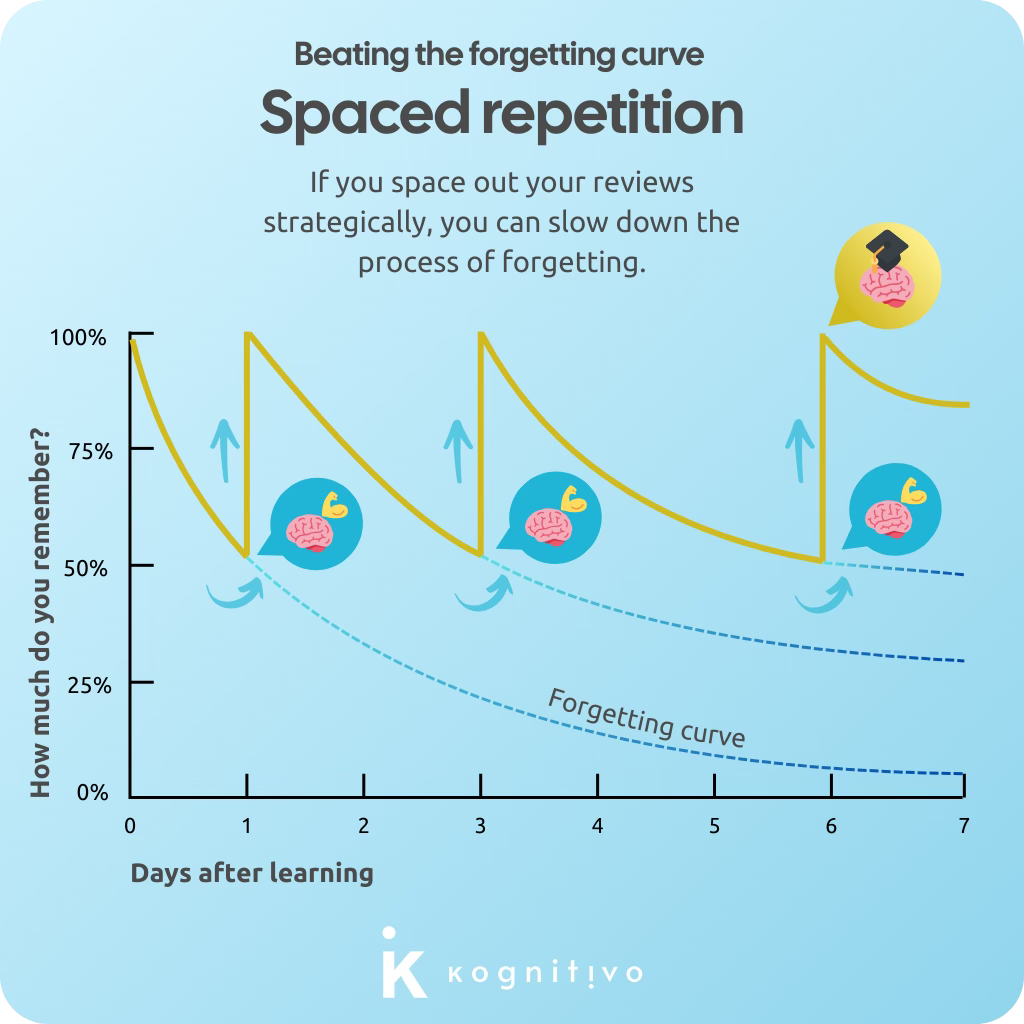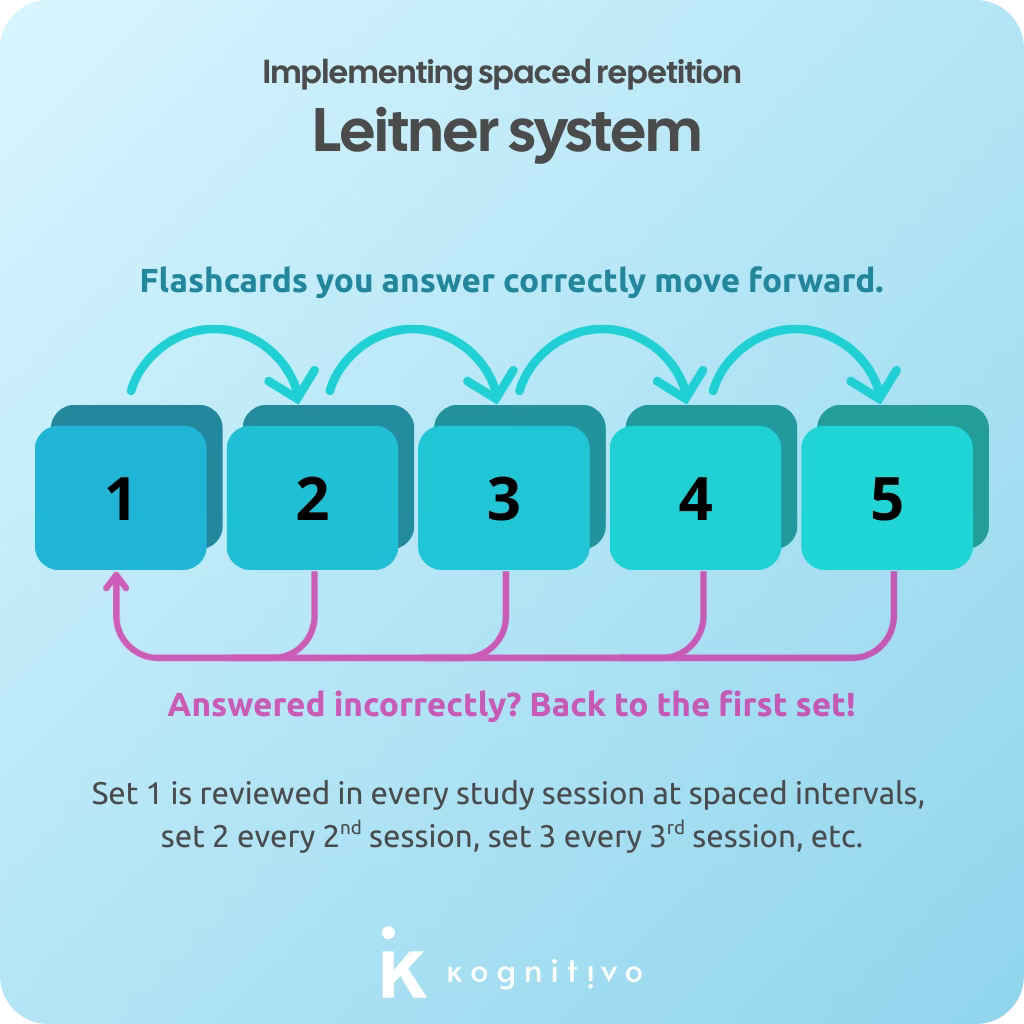Remember more by forgetting better: spaced repetition
Spaced repetition is one of cognitive science's most famous concepts. It explains the counterintuitive idea that spacing out your reviews actually makes your memories stronger.
You meet someone at a party. His name is James. You smile, repeat it to yourself, even throw in a clever “Nice to meet you, James” to lock it in. Three minutes later, you're introducing him to a friend and your brain hands you... static. You stall. “This is... my new friend!”. The name is gone. Like it was never there. You sweat.
You see James one week later on the street. You concede defeat: “Sorry, I totally forgot your name…” Now he’s angry “It’s James”. Did you look like a jerk? Yes. Is the name going to stick now? Also yes.
This isn’t just a social fumble. It’s a sneak peek into how memory actually works. Your brain doesn’t just forget stuff because it’s rude. It forgets stuff because it thinks it’s doing you a favor. And that's where spaced repetition comes in.
The forgetting curve
If you already follow Kognitivo, you know that what strengthens memory is retrieval practice. But when should you do it?
To answer that, imagine memory loss as a curve. Not a gentle slope, but a cliff. You learn something today. Tomorrow, half of it is gone. By the weekend, you're lucky if you even remember what it was about.
This is the forgetting curve. And it’s not just a theory: it's been confirmed by over a century of research. Unless we revisit information, we forget most of it quickly. But here’s the twist:
Forgetting is not a flaw. It’s your brain’s way of prioritizing.
Forgetting isn’t the enemy of learning. It’s the condition for it. Imagine remembering everything with equal intensity: every ad, every typo, every awkward silence. You’d be drowning in noise. Borges even wrote a haunting short story about a man cursed with perfect memory. It didn’t make him wise, it made him miserable.
Forgetting sharpens the mind. It’s subtraction with intent, a way of focusing on what matters now. If forgetting is the brain’s filter, then learning has to play by its rules. That’s where spaced repetition comes in.
What is spaced repetition, really?
Spaced repetition is a learning technique based on strategically timed reviews. Instead of reviewing material repeatedly in a short period, you space out your reviews over increasing intervals of time.
The key principle is to retrieve information before you are likely to forget it. Each successful recall makes the memory more durable, allowing longer gaps between future reviews, and slows down the natural process of forgetting (the “rate of decay”). It’s a way of beating the forgetting curve at its own game.
Training your brain to care
Spaced repetition works because it signals to the brain that certain information is important. Each time you struggle a bit to recall, your brain interprets that effort as a cue to strengthen that memory. It’s like telling your brain "This is worth keeping."
By spacing out your study sessions, you are not just reviewing information. You are teaching your brain that the information matters.
Spacing doesn’t just preserve old memories. It changes how your brain stores them. Over time, those traces move from the hippocampus (short-term, fast-learning) to the neocortex (long-term, stable storage). You’re not just reviewing: you’re re-encoding.
That’s why spaced repetition feels harder than cramming. Struggling a bit to recall is a sign that the memory is being rebuilt, not just replayed. That friction is where the learning happens.
Let’s put it to practice
So how do you actually do spaced repetition?
Most people use a flashcard app that already has a built-in spaced repetition algorithm, such as Anki, Memrise or RemNote. But don’t forget that you can implement spaced repetition with any kind of retrieval, not just flashcards (remember: testing yourself, brain dumps…). Even without an app, the principle is simple.
The golden rule: after each successful review, you can usually double (x2) the interval until the next one.
Here’s a classic schedule:
1st review: Same day (10–20 minutes after learning)
2nd review: 1 day later
3rd review: 3 days later
4th review: 7 days later
Further reviews: 14 days later, then 1 month, 3 months…
This is just a guideline. Harder stuff might need shorter gaps, easier stuff can wait longer. Adjust as needed. Studies show that adaptive schedules beat fixed ones.
Leitner system
Most apps follow some version of a system called Leitner, basically flashcards with a promotion strategy. You sort cards into different sets based on how well you know them. Every time you get a card right, it moves up to a set reviewed less often. Get it wrong? Back to the start.
It’s like a memory bootcamp: the stuff you struggle with gets more reps, and the stuff you know gets to chill. Simple, smart and really efficient.
If spaced repetition is so great, why isn’t everyone using it?
The science is solid. Decades of research say the same thing: spacing works. So why isn’t it everywhere?
Because our brains are drama queens.
Spaced repetition feels like failure. You forget a bit, struggle to recall and assume it's not working. Meanwhile, re-reading hundreds of pages the night before the exam gives you a sugar high of confidence. It feels efficient, even if it’s not. Cramming is a hack for now, it gives you the illusion of fluency. Spacing gives you real mastery. If you liked it, then you shoulda put a gap on it.
Also, let’s not forget that it involves planning. As with any plan, thinking about sticking to it is the easy part, but it’s in the execution where things often fail.
Thank you for reading!
Forgetting James’s name wasn’t a fail, it was a cognitive feature. He just happened to be your brain’s low-priority notification. But hey, spacing saved the day. Eventually.
That also goes for subscribing to Kognitivo. Haven’t done it yet? Fix it before the curve kicks in!
And remember: if learning doesn’t change you, it didn’t happen.
#StandUpForScience
Keep learning
Nerd out with your favorite AI-chatbot
Prompt suggestions. Always ask follow-up questions
Act as a teacher. Test me on “spaced repetition” using retrieval practice. Ask 10 progressively harder questions, one at a time.
How can I use spaced repetition techniques to get a friend to remember something very important?
What are useful applications of the Leitner system at work?
I fear that implementing spaced learning properly can take too long and be too complicated for me. Can you give me some tips on how to do it?
Links
Gwern.net: Spaced repetition: In this website, writer Gwern Branwen sums up available research and literature on spaced repetition in a very accessible manner. Highly recommended as a next read after this post.
Play it Again: The master psychopharmacology program as an example of interval learning in bite-sized portions (2nd link): This article describes a case study for spaced-repetition learning being implemented at a university program. It’s a really insightful and enjoyable read!
The right time to learn: mechanisms and optimization of spaced learning: This article links spaced learning to specific neural mechanisms and it goes on detail into how to fine-tune study intervals for better memory.







Tengo unos cuántos estudiantes de español que me dicen a menudo: "es que no estoy aprendiendo nada, siempre cometo los mismos errores". Ahora tengo respuestas para ellos 😏